Here’s a quick question. As soon as someone lands on your websites do they know what you’re all about? Do they have to continue scrolling or read the copy to figure it out?
If they can’t figure it out immediately then your unique value proposition (UVP) isn’t doing its job.
A UVP should:
- Let them know how your product solves their problem.
- Show the quantified value
- Illustrate why you’re better than the competition and therefore receive my hard-earned cash.
It’s like a condensed elevator pitch.
A drive-by pitch (I chuckled when I wrote that).
A great value proposition is able to communicate the main benefit of using your solution over the competitions.
In this article, we’ll take a deep look at the steps needed to create a Killer UVP.
Table of Contents
Your UVP taps into existing desires
You and I don’t create motivation on our websites.
We don’t create desire (according to Eugene Schwartz in Breakthrough Advertising).
We don’t create need.
The only thing we do is tap into it.
We channel it.
We amplify the motivations, needs, and desires already present.
You can build on them to create something even more powerful. It’s not created out of thin air.
So who creates motivation that makes your UVP shine?
Motivations are created by society, marketing, family, friends, PR, propaganda, and many other factors. When you understand those motivations — when you’ve done the research — you can piggyback off of it.
Leveraging an open source CRM can streamline your operations and provide valuable insights into customer behaviors, enhancing the effectiveness of your unique value proposition.
For creative businesses managing multiple clients and campaigns, financial management can often feel overwhelming. This is where tools like media accounting software come into play. By simplifying billing, budgeting, and financial reporting, such software ensures that teams can focus more on delivering exceptional results for their clients rather than getting bogged down by accounting complexities.
Managing finances is often overlooked when crafting a compelling value proposition, but it directly affects how professional your business appears to clients and partners. For small businesses and freelancers, having professional documentation for payments can boost credibility and trust. One simple way to handle this is to make a pay stub using an online generator. It saves time, ensures accuracy, and adds legitimacy to your business operations.
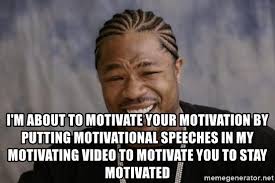
Your value proposition is a reflection of the motivations, desires, and needs of your audience. It also encompasses how you’re going to make them a reality.
That’s why you do research before you get to this point.
Your unique value proposition is the first thing most people see when they land on your website. It can be defined as:
A unique value proposition is a clear statement that reflects your audience’s motivations, explains how you, your product, or service solves their problems, and lets your ideal customer know why they should buy blinds from you instead of a competitor
Your UVP has a lot of work to do.
Setting yourself up for a compelling UVP
There are a few preliminary criteria before you jump into writing a compelling UVP.
The value proposition should never be written in marketing speak.
- World class leader in x
- Setting the industry standard for x
- A purveyor of best practices for x industry over the last 50 years
All of these are marketese. They don’t help the person viewing it determine how the hell you’re going to help them solve a real problem.
A value proposition is not:
We make widgets that increase the connectivity throughout the system to ensure maximum output and interlinking capabilities for better digital transfer.

Translation: Widgets that make calls clearer.
Run from marketese.
Run from useless grammar.
Your aim is to communicate and convince. Not to show them you know how to speak English.
The elements of a UVP
A unique value proposition has a few moving parts.
Headline: This is the big promise. You tell your customer what they stand to gain from signing up, reading your content, buying your products and services, or just following you around the internet. You can mention the product or the person you’re targeting here.
Subheadline: This is 1-3 short specific sentences that does one of two things:
- Further iterate the benefits.
- Further explain what you offer.
Bullets: List out the primary benefits of your solution (a rule of thumb is no more than 5 bullets, but test it).
Visuals: Images help us imagine what the “big promise” of the value proposition means in our lives. A hero image, in action image, or custom-designed graphic images work well.
How does your current Value proposition measure up?
- Does it have a compelling “big promise” your ideal customer instantly understands?
- Does it speak to a particular group of people?
- Does it incorporate at least 3 of the 4 elements that make a great value proposition (headline, subhead, bullets, and hero image)?
- Is it specific?
- Is it free of marketing jargon like “world-class” “industry leader” or “innovate?”
- What is your unique angle?
So, a good value proposition is:
- Clear
- Concise
- Illustrates your unique difference
- Communicates the end result of your product, service, or message.
How to craft a winning value proposition
If a visitor stays on your website for more than a minute, you’re doing something right.
You’ll spend a lot of time and energy driving clicks to your website through social media, SEO, advertising, and other methods.
Once there, they’ll meet your headline.
What is your headlines job?
Yes, it can convey the benefits of your product/service. Yes, it can show your visitor how you’re different. Yes, it can communicate your big promise.
It can do all these things but that’s not its real job. Its real job is to make people so interested in what you’re offering they read the next line.
Let me repeat that.
Your headline should be so compelling that it gets your visitor to read the next line.
Your subheadline should get them to read the line after that.
Your bullet should get them to read the line after that. On and on until they’ve gotten beyond your value proposition, are in the body copy, and have finished the last word on the page.
If the UVP isn’t read then it’s all for naught
If no one reads the next sentence then all the time you’ve spent fighting to create a value proposition is lost.
Not to mention the time you spent creating everything else on the page. Understand, the only purpose of each line is to be so compelling that the one after it has to be read.
While they’re reading, your message will jump out.
Now, Back to The Big Promise
The headline of your UVP is the big promise. It’s what you can do for your customers and what they can expect from you. In essence, it’s how you position yourself in the market. Unlike some titles in blog posts that can be curious, click bait, or resemble a news headline, the value proposition must be clear.
- If it’s not clear, no one knows what you do
- Without clarity, no one will stick around
- If it’s not clear, you’re wasting your time and your visitor’s time
A clear headline has your unique promise. By unique, I don’t mean you need to be the only one in the world with that promise. I mean you need to be the only one in your customer’s mind that can do what you – and do it well.
The value proposition doesn’t start with you; it starts with your customer.
Sure, 30 people offer fitness services in the metro Atlanta area. Your unique value proposition can focus on how you offer a bespoke fitness service for busy executives so that they can….
Fill in the blank.
Being unique in something your customer doesn’t care about or something that doesn’t have utility is just as bad as not being unique at all.
“The inner lining of our pants are green.”
And so bloody what?
Conversions don’t happen in a dead space in the world. They happen in the minds of individuals.
Finding The “Unique” of your Unique Value Proposition
What pains and objections are your customers repeating on Amazon, forums, Reddit, and every other place you’ve checked?
Why do they want to alleviate that pain?
What benefits are they happy they’ve been able to receive while interacting with the products, services, and messages being used in your niche?
Here are a few examples from a quick search through Amazon.

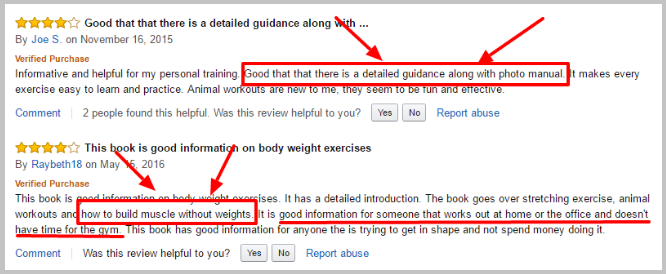



Just from these Amazon reviews, I can see messages I can work into my headline. Messages people care about.
- Easy workouts
- Not time-consuming
- Foods to eat and not to eat
- Meal plans
- No more dieting
- Simple way to measure food servings for protein, fat, and carbs
- Well researched
- Prefer videos
- Bodybuilding without weights
These messages can become a part of your big promise — your headline — and many of the others can become the subhead and the bullets of your value proposition — on to that in a moment.
Go through your data and reevaluate what people say they want and already have.
Now, move on to what your competitors are talking about and showing their customers.
While showcasing differentiated offerings, straying excessively from category norms risks isolating niche meal plans from mainstream appeal. Though reacting to direct feedback seems intuitive, truly breakthrough value propositions artfully balance customer desires with recognizable frames of reference that welcome in relative latecomers.
Just as novel meal plans fuse comfort foods with craveable new flavors based on broad culinary awareness, disruptive products reimagine universal experiences introducing uniqueness without full-scale unfamiliarity.
Are they emphasizing the same things you picked up in your review mining? Can you do it better than them?
Can you do it in a slightly different way?
Can you target a different segment?
Your big promise isn’t something you rush into because it’ll determine the direction you take for the next few weeks, months, and even years.
It’s a combination of what you can give and what they want.
Take your time. You only need one big idea.
The Subheading and Bullets
After you figure out a concise headline that’s done its main action — resonate with visitors enough to get them to read the next line — it’s time to create a stunning subhead that follows up.
The subheadline can take one of two forms.
- Can show off benefits
- Can further explain what you offer
Let’s look at benefits.
A common thread you’ll see on many websites is confusing features with benefits and listing fake benefits.
What’s a fake benefit you ask?
A fake benefit is something that seems useful on the surface but actually isn’t.
“Lose weight naturally!”
There’s no true benefit therein.
Clayton Makepeace — an amazing copywriter — prescribes a simple test he calls the “forehead slap” test. Have you ever stopped what you’re doing, slapped yourself on the forehead, and exclaimed: “I need to lose weight naturally!”
You probably never will.
Getting me or anyone else to buy that is going to be tough — really tough.
Nobody really wants to lose weight for the sake of losing weight. The real power behind that statement is what can happen if you don’t stay in good shape. Public ridicule, lower self-esteem, premature death, predisposition to diabetes which comes with its own host of problems, hypertension, increased risk of stroke, cancer, blindness, kidney disease, heart attack, etc etc.
An overweight person wants to avoid the dangerous complications associated with obesity. That’s the real benefit of the fitness program or dieting regime being offered.
Features Vs Benefits
Features and benefits can be hard to sort out and easy to confuse — especially when you’re close to the message or product being sold.
Features are facts about what you’re offering.
Benefits are the ways it helps your customers.
A good portion of your time will be spent educating your customers on what you’re offering and how it can make their lives better.
Sure, they know they need to lose weight, but they don’t know why you’re the best person for the job.
Take off the glasses of the creator and put on the glasses of your customer and ask yourself “and so what?” about every benefit and feature you think you have.
Imagine you’re selling laptops and one of the features of is a 1 terabyte hard disc. It’s a feature because it’s a fact about the laptop you’re selling.
The laptop has 1 terabyte of hard disc space.
And so what?
So you can store more things.
And so what?
Life is less stressful, you don’t have to worry about what you download or store because there’s enough space to accommodate it. Take as many pictures, record as many videos, and install as many games as you want knowing your laptop will always have room for more.
Let’s keep going.
The chairs have a reinforced steel frame.
And so what?
No matter how much weight you put on it, your chair will keep your loved ones secure.
Our shirts or made with patented stain resistant fibers.
And so what?
Your life becomes easier because you won’t have to worry about your children messing up their clothes five minutes after being dressed.
Real Benefits Connect Desires
The real benefits to your customer mirror their desires, wants, and needs. Saving time, cutting costs, making money, becoming healthier, and being happier all qualify.
When you know the real desires of your customers, you can write a string of benefits that work every time.
When you don’t know the desires of your customers, your benefits will seem hollow and uninspired.
That’s why you’ve done the research.
That’s why you’ve picked out their exact words.
That’s why you took the time to figure out their real objections.
Go through your research and figure out what your customers really want — listen to what they’re telling you. At the same time, look at the benefits your competition is offering your customers for choosing them.
Look for ways to structure your message so it taps into their deepest desires.
Perform the “and so what” test on every benefit you list in your subheadings and bullets to make sure it’s filling a real need/desire.
When you’re done, the subheadline will be a short, powerful, benefit-driven sentence. Your bullets will continue that interaction.
Let’s talk about that hero image
Is a hero image strictly necessary? No, it’s not.
Does a hero image help? Yes, it does.
The hero image is usually the first thing someone sees when they land on your page. It sets the tone for the rest of the interaction with your website. It tells a story.
If your hero image shows class and sophistication that’s what they’ll expect throughout your website. If your hero image has a playful edge then that’s what they’ll expect throughout your website.
Here are a few tips to help you make or choose a better hero image.
1. Show them where to look.
Directional cues have been used for a long time in advertisements. Countless studies have shown that we tend to follow the gaze of people we’re looking at. Use a photo or image that points your customers in the direction of your UVP. People work best but arrows and other directional cues are still effective.
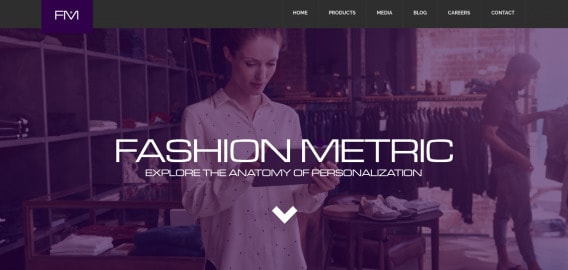
Fashion Metric, an analytics agency that caters to fashion ecommerce brands, uses this approach well. Notice how the lady is looking at her tablet which happens to be blocked by their value proposition.
The proposition could be clearer.
2. Let the Image Support Your Value Proposition
Your promise to the people visiting the page should be supported by the elements and images on that page. It’s shouldn’t overpower it. A hero image can mirror the exact statement of your value proposition.
For example: if you’re a fitness trainer, a hero image of people in action at the gym or obviously healthy smiling people would be in line with what you’re promising.
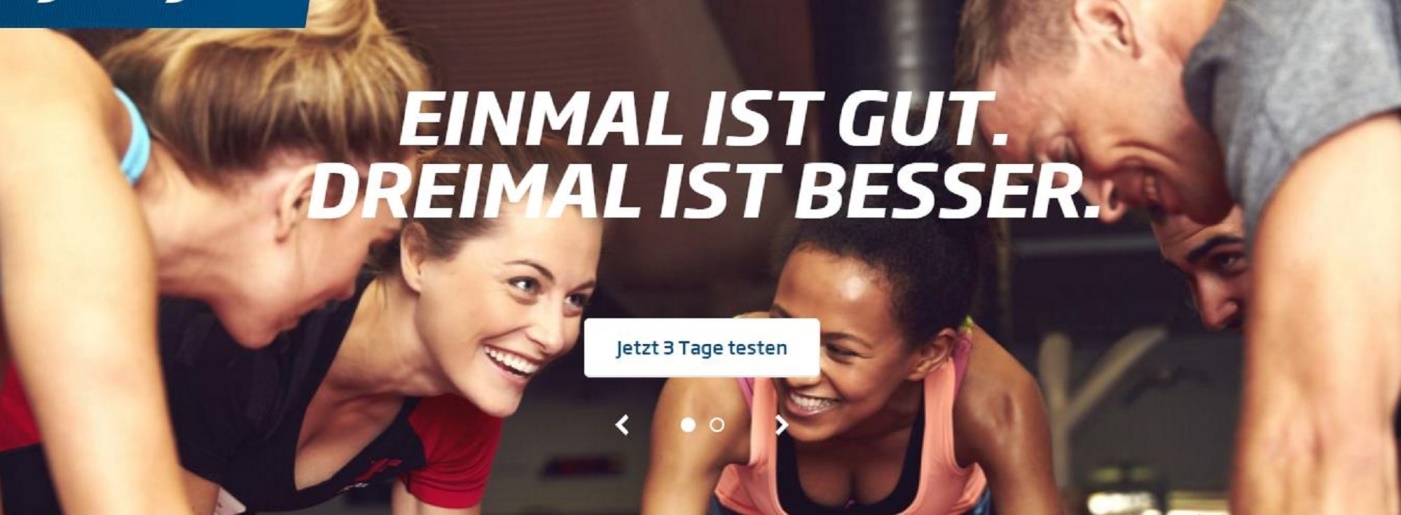
I have no idea what the value proposition is but the image makes it clear that they make fit people happy. They get points for using directional cues.
3. Emotions
An emotional appeal, used the right way, can almost never go wrong. A thick, guttural, emotional reaction will entice visitors to stay on the page and find out more.
Another benefit of an emotional image is quickly showing the world — and your customers — who you’re serving.
4. Bold Colors
Nothing grabs attention like the right colors. You have your brand colors and then you have complimentary colors. Switch it up here and use a color that contrasts sharply with the one’s you’ve chosen for your brand.
Conversely, you can choose a plain color background that puts more emphasis on the message of your value proposition.

The green against the muted background begs to be clicked and interacted with.
5. Illustrations
Your hero image doesn’t have to be a picture. You can use illustrations to set yourself apart. They’re harder to get right and usually require a deeper understanding of the people you’re serving.
Just make sure your illustration doesn’t overpower the message of your value proposition but rather compliments it and you’ll be fine.
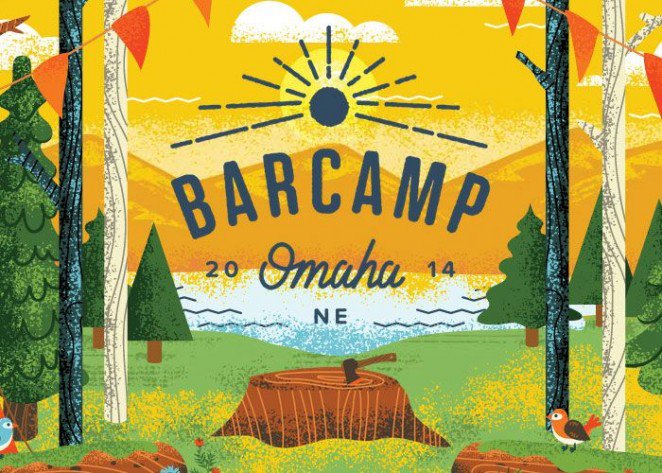
6. Show your customers themselves
If you know your customer is a young college student, a hero image of young college students works well to reinforce that.
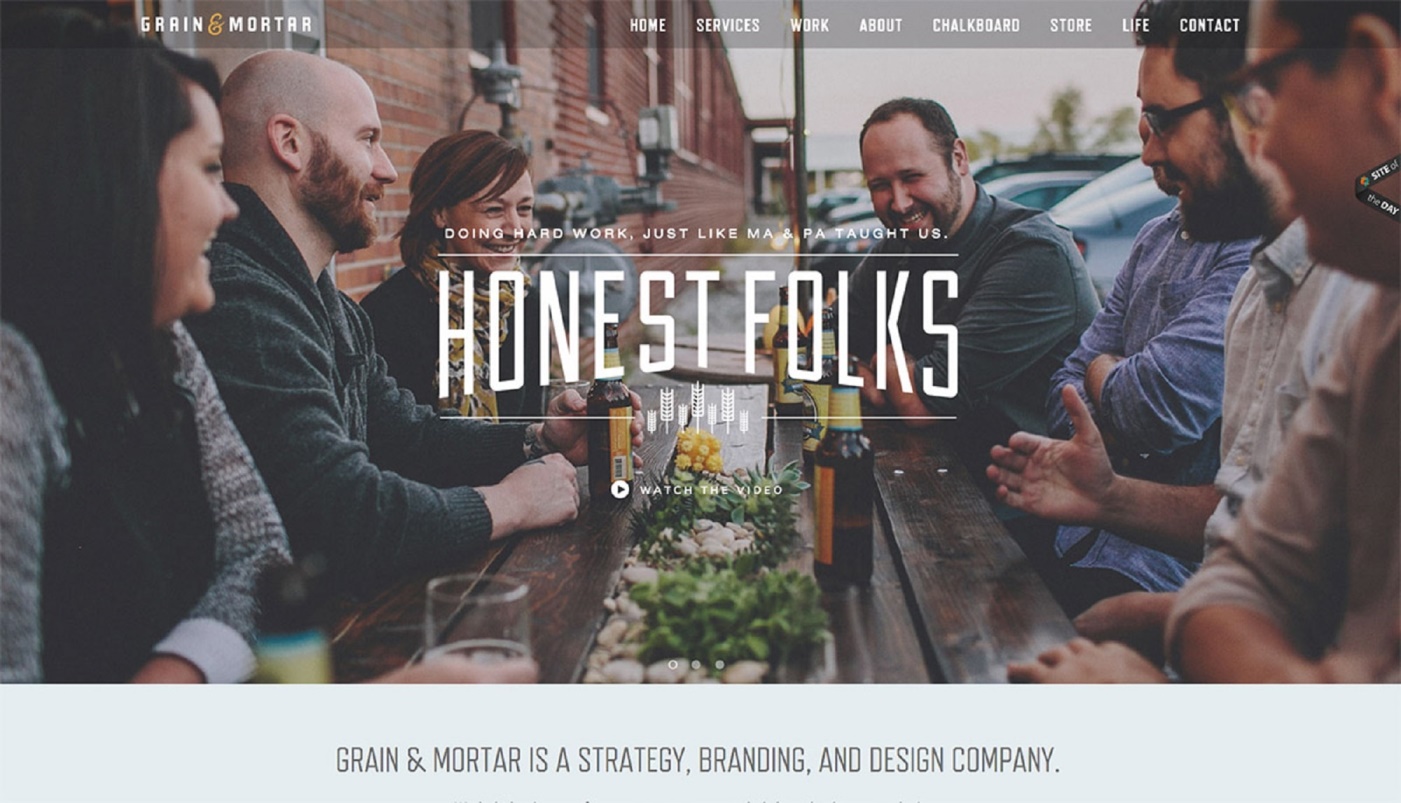
Grain and Mortar does a good job of letting you know real people — normal people — are behind the spectacular results they achieve for their clients. This is a hero image of people who aren’t heroes at all.
A few Things to consider for your UVP
Your hero image is there to compliment your unique value proposition, not overpower it. Let’s dive into some things you should always keep in mind when choosing a hero image.
- Subject and Text Placement
There are a few ways you can use a hero image on your page. Subject left aligned, subject right aligned, and no subject. Let’s look at each one in turn.
- Subject left aligned. The hero image is pushed to the left and the text is on the right. Usually, the text will also be left aligned — not a must — to keep the overall balance on point.
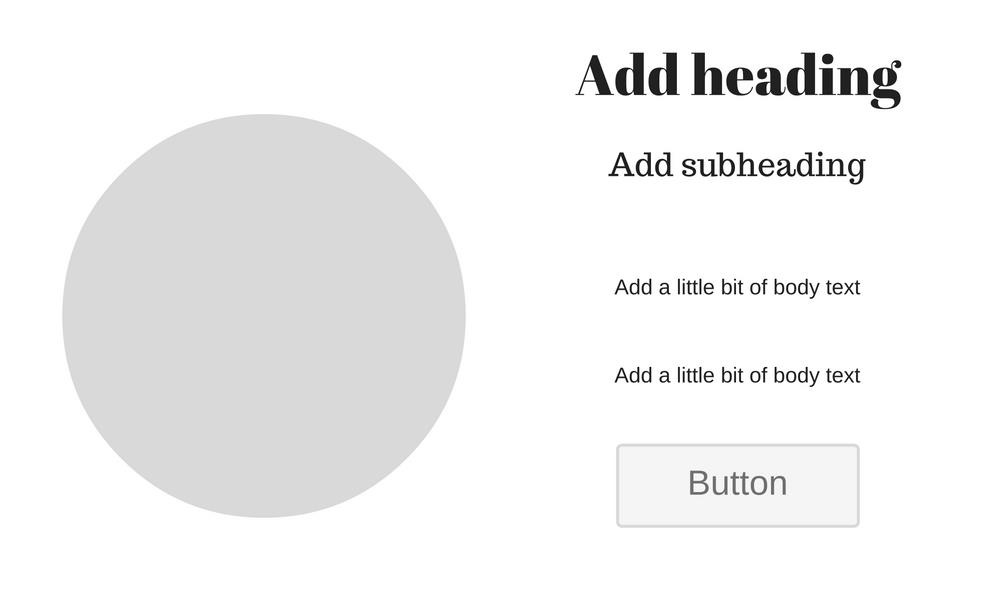
- Subject right aligned. This is the exact opposite of the subject left aligned. The images are on the right and the text is on the left. The text itself can be right or left aligned.
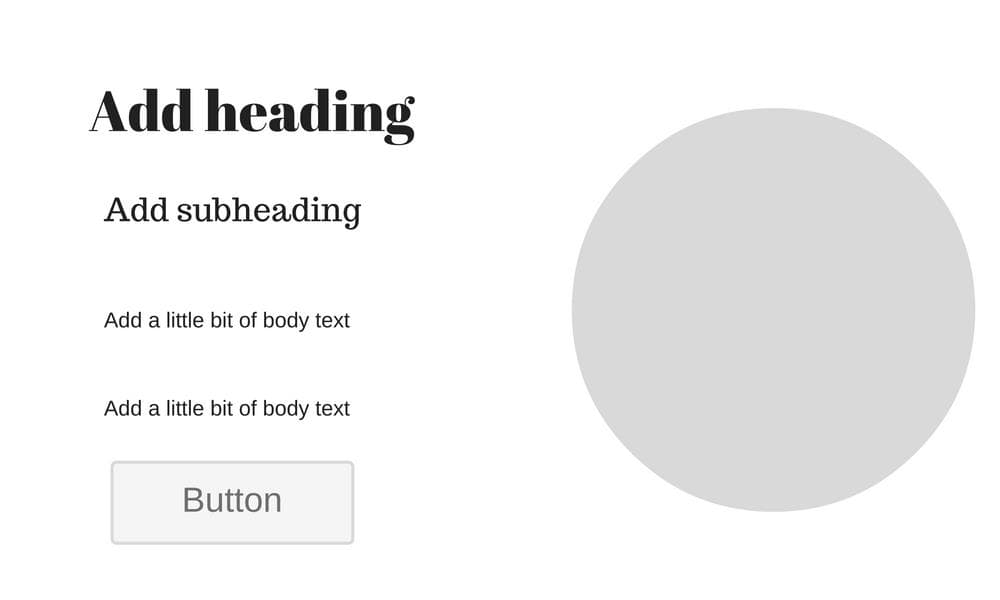
- No Subject. No subject seems to be the most popular type of hero image and it’s easy to see why. This keeps the messaging front and center and truly makes the image complementary to the value proposition.
- Contrast
No matter which type of image alignment or hero image format you’ve chosen, there needs to be contrast. There’s nothing worse than people struggling to see what you’ve written.
If possible, add an opaque overlay or slightly blur the background image so you’ll be able to see the text more clearly. I know it’s going to sound obvious — use dark text on light backgrounds and light text on dark backgrounds.
If you’re ever in doubt about the readability, change the image. As far as where to source your image, I suggest you take one or design one yourself.
If neither of these are an option, you can use a stock photo service, but avoid the free ones. Shell out the few dollars it’ll cost for a compelling image.
Why? Because people in the same space browse the same websites and you don’t want your hero image to be the same image someone else has used as a featured image for one of their blog posts.
Now it’s your turn, sit down and think about the message you want your hero image to deliver and the type of images that’ll embody that. Once you’ve gotten an idea, capture it yourself with your camera or design it.
If those options aren’t viable, go to a premium stock photo site like Fotolia or Shutterstock and browse their library for something you can use.
Examples of Unique Value Propositions
Stripe
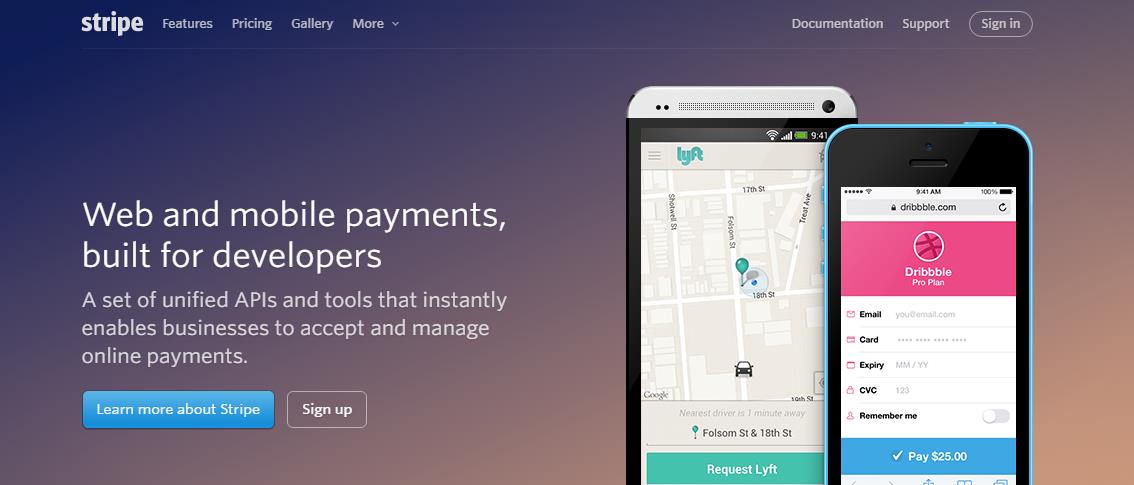
What is the company selling? Web and mobile payments platform.
What is the benefit of using it? It lets you easily accept and manage your online payments.
Who is the target customer? It’s been built for developers and businesses that know a thing or two about technology.
What makes the offering different? They start out with tons of API’s so you — as a developer — can easily integrate it with custom payment solutions you’re using in your business.
Bonus The two mobile phones have the apps of two well-known Stripe customers for a bit of subliminal social proof.
Dollar Shave Club
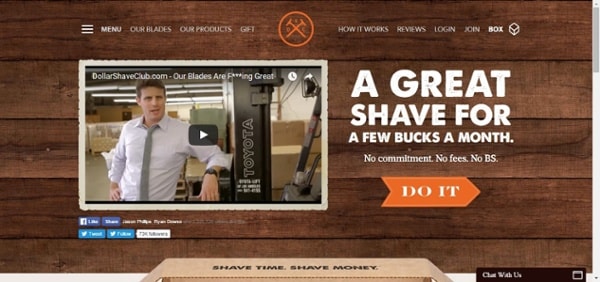
What is the company selling? Shaving supplies.
What is the benefit of using it? Blades and other accessories delivered directly to you.
Who is the target customer? It doesn’t explicitly say it, but it should be men (for something as universal as shaving, it’s not necessary to be so explicit).
What makes the offering different? It’s incredibly cheap. If you’re a guy, you know how much it can cost to buy good razors. On top of that, they’re delivering it to your doorstep.
Vimeo
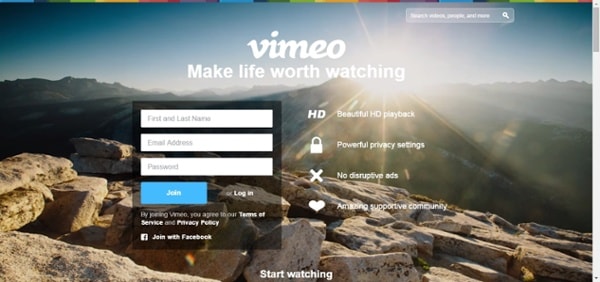
What is the company selling? Video hosting platform.
What is the benefit of using it? No ads (like YouTube), strong community, privacy for your videos.
Who is the target customer? People who create videos, but there’s a catch. You agree to “make life worth watching,” not to spam the platform with dozens of cat videos. You can go to YouTube for that.
What makes the offering different? They don’t have an advertising model so you watch only what you want to watch. Another benefit, which you can infer from the value proposition, is a community of high-quality creators.
Freshbooks
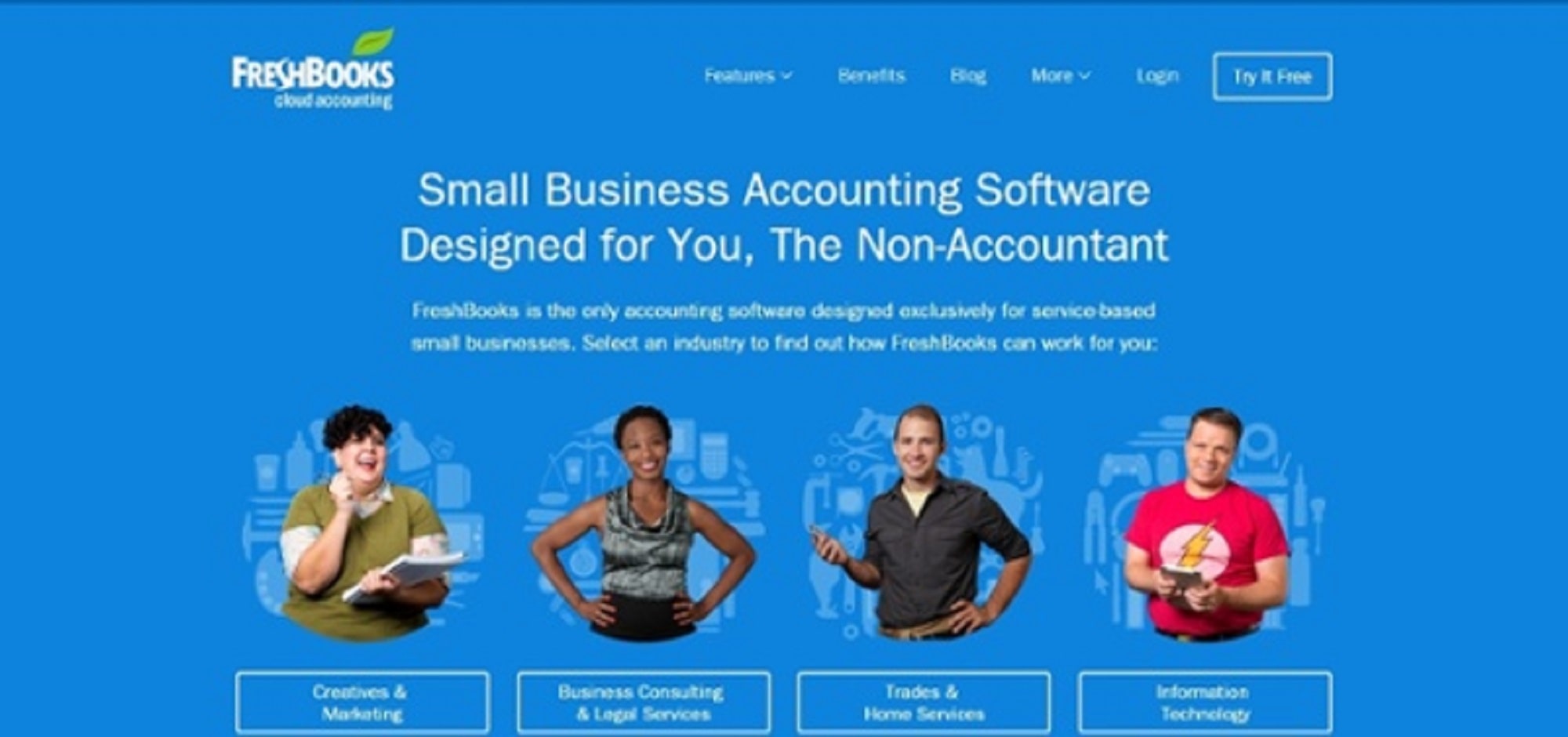
What is the company selling? Small Business Accounting Software.
BEST Small Business Accounting Software in the USA? Accounting software is an application that records and processes financial transactions within modules. These modules include accounts receivable, accounts payable, ledger, journal, and payroll. It helps professionals manage accounts and perform numerous accounting operations.
A handpicked list of the top accounting software USA for Small Businesses with popular features and website links follows. The list contains open-source (free) and commercial (paid) software.
What is the benefit of using it? Made for small business owners who’ve not gotten a degree in accounting. Simplicity
Who is the target customer? Service-based small businesses.
What makes the offering different? Built exclusively for service-based businesses as opposed to anyone and everyone that needs accounting software.
Bonus Great hero image showing the type of people who’re using the software.
Tortuga Backpacks
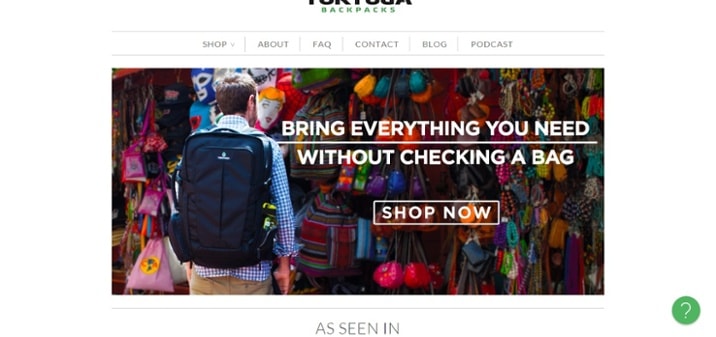
What is the company selling? Traveling backpacks.
What is the benefit of using it? You can carry everything you need without extra luggage.
Who is the target customer? Travelers.
What makes the offering different? That’s where it gets dicey. It’s not exactly clear how they are different from other backpack companies.
Skillshare
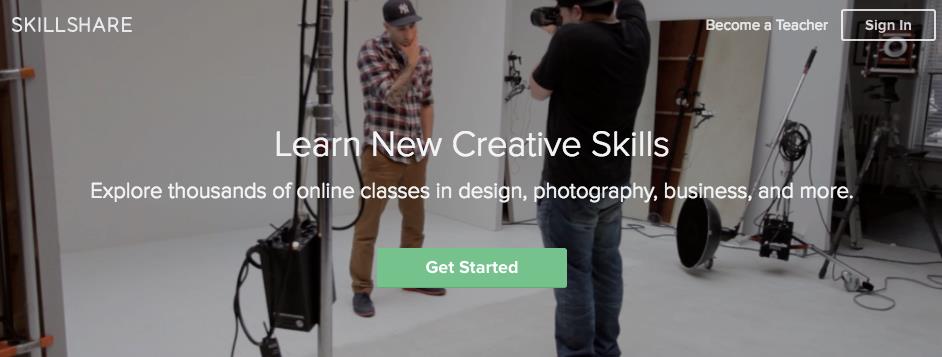
What is the company selling? Online creative courses.
What is the benefit of using it? Large library of courses to learn a new skill at your own pace.
Who is the target customer for this product or service? People who want to learn new skills but can’t (or don’t) want to commit to a physical location.
What makes the offering different from competitors? It specifies that you’re going to be learning creative skills. Not accounting, not financial planning, and not fundamentals of engineering.
Bonus: They use a background video that shows people learning and practicing their newfound skills.
Zapier
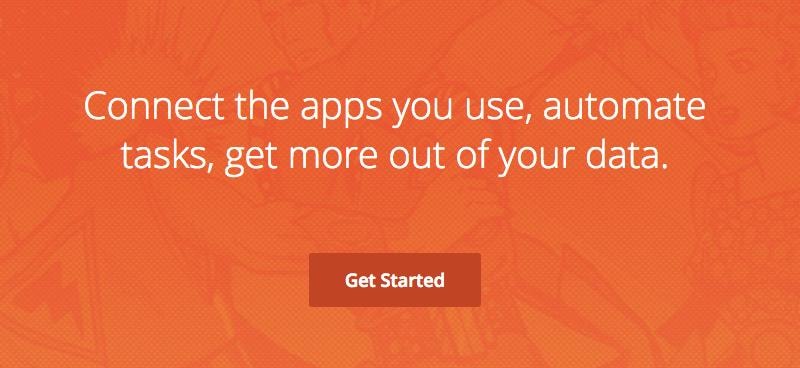
What is the company selling? A way to connect the apps you use.
What is the benefit of using it? Automate tasks that would otherwise be repetitive and utilize your data more efficiently.
Who is the target customer for this product or service? People who want to be more efficient with their apps. Anyone who uses more than six apps has had the trouble of organizing all that information and would love to connect them and make it easier to manage.
What makes the offering different from competitors? Instead of offering another app, it’s a way to connect your apps through one app. On top of that, many of the functions are automatic.
Conclusion
You’re equipped with all the information you need to make a truly powerful value proposition.
- How to create headlines that communicate your value by using your customer’s words.
- The ins and outs of creating a powerful subheading that showcases benefits rather than features.
- How to use bullets to engage your reader
- The different parts of a hero image and how to choose the right one for your business.
- Examples of companies that have made great value propositions.
The only thing left is to create a unique value proposition and test it in the wild.
Let me know what tricks and insights you use to craft a powerful UVP in the comments and don’t forget to share.